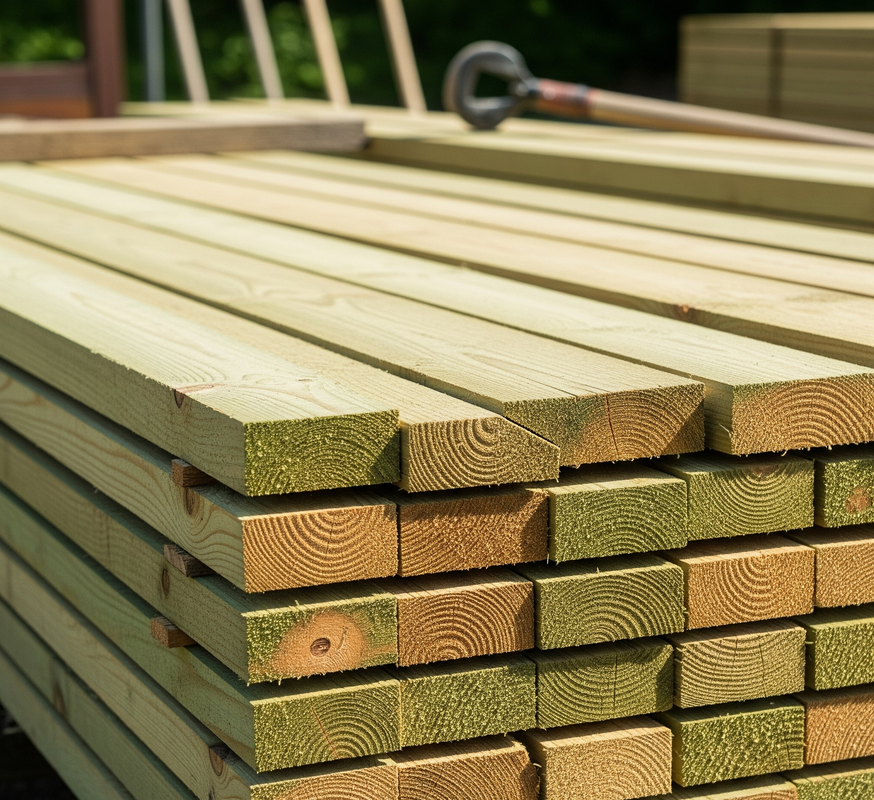
Pressure treated wood is one of the most common and trusted materials for outdoor projects like decks, fences, and pergolas. From my experience working with homeowners, I can tell you that it offers a strong and affordable option for lasting outdoor builds. However, like any material, it has its pros and cons. Knowing these will help you decide if it’s the right choice for your project.
What Exactly Is Pressure Treated Wood?
Pressure treated wood starts out as regular wood. Then it goes through a process where chemicals are forced deep into the wood to protect it from insects, moisture, and rot. This treatment helps the wood last much longer when exposed to weather and outdoor conditions.
Because of this, pressure treated wood is often used for parts of structures that need to be strong and durable, like fence posts and deck frames.
Why Do People Choose Pressure Treated Wood?
One of the biggest reasons is the price. Compared to other outdoor woods like cedar or exotic hardwoods, pressure treated wood usually costs less. If you want a sturdy material but are watching your budget, it’s a good option.
It’s also easy to find. Most hardware stores and lumber yards carry pressure treated wood in many sizes, so it’s convenient to get the materials you need.
Working with pressure treated wood is straightforward. You can cut, drill, and nail it just like regular wood without special tools or extra effort.
With the right care, it holds up well against rot, insects, and moisture, making it a strong choice for outdoor projects.
Things to Keep in Mind
While pressure treated wood has many benefits, there are a few things to consider.
The chemicals used to treat the wood can be a concern for some, especially if the wood is near vegetable gardens, children’s play areas, or pets. If that is your situation, you may want to consider alternatives or take safety steps.
Another point is appearance. Pressure treated wood often has a greenish or brownish tint when new, which some people don’t find very attractive. It also doesn’t have the natural, warm look that woods like cedar have. Over time, if you don’t seal or stain it, the wood may crack, warp, or fade.
Because of this, pressure treated wood requires regular maintenance. You should clean it and apply a protective sealant or stain every few years to keep it in good shape.
Also, pressure treated wood tends to be heavier than untreated wood. This extra weight can make it a bit harder to handle and install.
How to Take Care of Pressure Treated Wood
From my experience, proper maintenance makes a big difference in how long your pressure treated wood will last.
Start by cleaning it once a year to remove dirt, mold, and mildew. Using a mild soap and water usually works well.
Next, apply a water-repellent sealant or stain every two or three years to protect the wood from moisture and sun damage.
If possible, try to avoid having the wood directly touch the soil. Wood in contact with ground tends to absorb moisture faster and can decay sooner. Using gravel, concrete, or proper footings helps keep your wood dry and lasting longer.
Finally, check the wood regularly for cracks or damage. Fix small problems quickly before they become bigger issues.
Is Pressure Treated Wood Right for You?
Pressure treated wood is a solid choice if you want a strong, affordable wood for outdoor projects and don’t mind doing some maintenance. It works well for structural parts like fence posts, decks, and pergolas.
If you prefer a wood that needs less upkeep or want a natural look, other options like cedar or composite decking might be better.
Choosing the right wood comes down to your budget, how you want your project to look, and how much time you want to spend on upkeep.
If you want to know more about pressure treated wood and how it compares to other materials, check out this helpful guide on pressure treated wood pros and cons.





Comments (0)